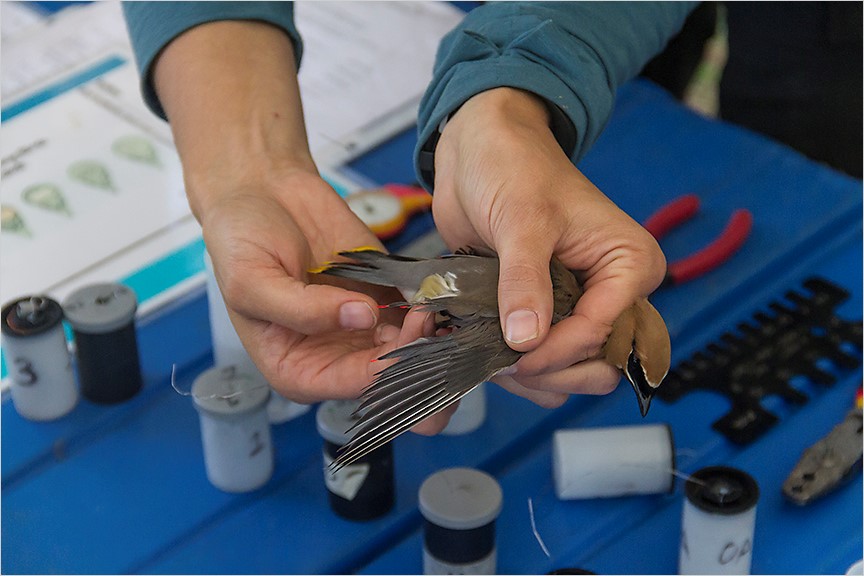Population Monitoring
Our long-term monitoring programs track bird populations over time, providing important insights into bird population status and trends in a rapidly changing world. We coordinate our monitoring efforts with many partners in the region. By utilizing standardized monitoring techniques and contributing to shared databases, we leverage existing data to broaden the context of our findings, while contributing to national monitoring efforts.
We monitor breeding bird communities in a variety of habitats in western Montana. Since 2004, we have conducted count-based surveys of breeding birds in floodplain riparian areas across 500 miles of the Madison and Missouri Rivers.

Through our banding stations, we collect important demographic information for breeding birds across western Montana as part of a national program called MAPS (Monitoring Avian Productivity and Survivorship). As part of this MAPS program, we band and process passerine species which allows us to collect data on the birds that can only be done in the hand. We can collect information on their age, sex, body condition, and reproductive condition. Captured birds are given a lightweight, uniquely numbered aluminum leg band and released unharmed. Subsequent recapture data provide information on survival, reproductive rates, and sometimes, movement patterns.

